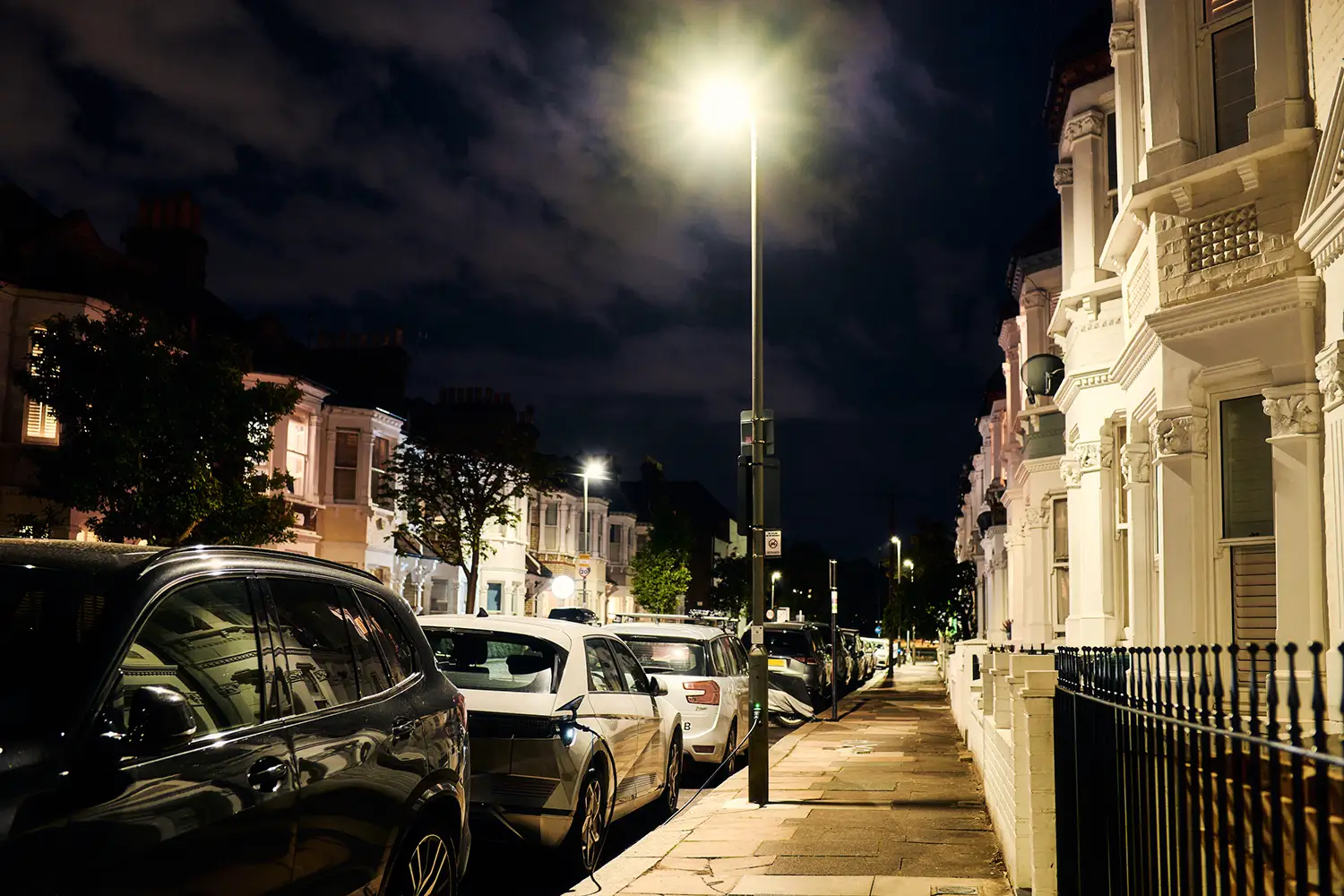1. Choosing the Right Charging Speed
When designing their EV strategy, councils should look for technologies that target this idling time. That way, they can focus on installing enough of these chargers to facilitate easy on-street charging. Depending on the number of households and EV uptake in the area, each street might require anywhere from 2 to 20 charge points. With potentially hundreds of streets in need of charging infrastructure, the total number of required charge points can quickly exceed a thousand. Local authorities can consider different options based on an assumed budget of £1m:
(*prices may change dependent on project parameters)
20-25 x 50 kW
single rapid
charge points
(own costs).
OR
60-75 x 7-22 kW
dual fast
charge points
(own costs).
OR
700-800 x 5 kW
single lamppost
charge points
(own costs).

There is a lack of literature on the topic of lamppost charging and value for money. As a result, we have seen councils specifying +7kW charge points in tenders for residential charging. Most lamppost charge points provide between 4 to 7kW. However, it’s important to be aware that the charging infrastructure should reflect the existing energy supply and dwell time. Whilst service stations or car parks only used for short stays should include rapid chargers, the dwell time is much longer for residential parking. It would be a waste of resources and energy to provide residents with rapid charging in under two hours when they usually stay parked for 8+ hours.
2. Ensuring your network will stay up and running
To achieve value for money, it is essential that your charging network operates as close to 100% reliability as possible. This requires a two-pronged approach:
-
Reliable Hardware: Street environments are harsher than typical charging hubs or parking lots. Chargers on streets are exposed to the elements and face a higher risk of damage. Therefore, selecting robust and durable charging hardware is crucial.
-
Choosing a reliable network operator with a proven track record: The charge point industry is booming with different solutions. Partnering with network operators who have proven their reliability at scale can significantly enhance charger uptime. A provider with a track record of maintaining consistent and reliable operations can ensure the best value for money.
3. Open Infrastructure Access for All – ensuring your return on investment
The end goal for any public EV charging network should be to have a high level of utilisation by the general public. After all the goal is to encourage local residents to switch over to EVs.
4. Low-Cost Relocation Options
Over time, residential streets may undergo changes that necessitate relocating charge points. For example, as part of your carbon reduction strategy, you may want to implement more cycling lanes across your district. Local authorities should consider the cost and ease of relocation when selecting on-street charging infrastructure. Different types of chargers have varying relocation costs. For example:
- 50 kW charger: ~ £15-25,000 and 4-6 months for relocation.
- 7-22 kW retractable or street flush chargers: ~ £3-8,000 and 2-4 months for relocation.
- Lamp post chargers: approximately £500 and less than a week for relocation.
By opting for chargers with lower relocation costs, local authorities can adapt to changing needs more efficiently.

5. Predictable Grid Connection Costs
Grid connection costs are a hidden cost in most EV charging projects. They can have a huge impact on the total cost of a project.
6. Specifying the right payment options for different EV charging uses
Payment methods can add significant cost onto your project.
Value for Money for EV Drivers
Evidence shows the public wants to charge at or near home. When it comes to EV charging, near-home charging has been shown to be the most appealing and the primary charging solution for those looking to switch to EVs. The common goal is to park directly outside the home [5]. ‘Rapid charging as you go’ and ‘charge where you are’ (i.e., charging at destinations where people regularly park their car), whilst appealing, were generally seen as ‘back up’ options to support charging near home.
Conclusion
By adhering to these six crucial points, local authorities can ensure value for money when selecting their EV charge point strategy. The key components that contribute to the success of an EV charging structure include:
Optimal charging
speed choices
Reliable hardware and
ntetwork operators
Open infrastructure
access
Low-cost
relocation options
Predictable grid
connection costs
In prioritizing value for money, local authorities can empower their communities to embrace electric vehicles. This way, they can accelerate the transition to a greener, more sustainable future.
The ubitricity portfolio of charge points contributes to bringing intelligent solutions for charging electric vehicles. We transform streetlamps into public EV charge points, and we also offer individual solutions for rapid and fast charging in public urban areas.
Do you need more help with the rollout of your EV charging infrastructure? Get in touch with our team and we’ll be happy to answer all your questions and guide you to deliver the best infrastructure for your residents.

